DOH Medicaid Update November 2003 Vol.18, No.11
Office of Medicaid Management
DOH Medicaid Update
November 2003 Vol.18, No.11
State of New York
George E. Pataki, Governor
Department of Health
Antonia C. Novello, M.D., M.P.H., Dr. P.H.
Commissioner
Medicaid Update
is a monthly publication of the
New York State Department of Health,
Office of Medicaid Management,
14th Floor, Room 1466,
Corning Tower, Albany,
New York 12237
Table of Contents
HIPAA News: Providers Are You HIPAA Compliant?
Payment Of Medicare Coinsurance
Who Pays For Dental Services: Managed Care Or Fee-For-Service?
Required Medical Record Documentation For Supervising/Teaching Physicians
Use Of Electronic Records By Medicaid Providers
Lead Toxicity Testing Is Mandatory
Expansion Of Service Areas Managed Care Special Needs Plans
Limitation On Payment To Physicians For Radiology Services
Article 28 Clinics Billable Clinic Visits
Important Viagra And Levitra Prescribing And Billing Information
Is Elderly Weight Loss A Normal Part Of Aging?
Pharmacy Providers - Dual Billing
Ask The Pharmacist: Electronic Billing of Claims With Other Insurance
Pharmacy: Decimal Billing Version 5.1 Billing Format
Guidelines For The Delivery Of Drugs, Supplies and Durable Medical Equipment
Depression And Diabetes
New York Develops A Statewide Asthma Guideline Tool
HealthNow Family Health Plus Dental Providers
Coverage Of Palivizumab
Providers! Are You Changing Your Correspondence Address Or Pay To Address
REFERENCE TOOL FOR PHARMACISTS
Return to Table of Contents

The Medicaid Program has compiled all the pharmacy Medicaid Update articles from January 2001 through September 2003.
This compilation, to be used as a reference tool, will be updated quarterly and is available electronically. To receive this compilation, go to the Department website at:
http://www.health.state.ny.us/health_care/medicaid/program/main.htm
or,
request the electronic version by writing to us via email at:
MedicaidUpdate@health.state.ny.usHIPAA
NEWS
PROVIDERS: ARE YOU HIPAA COMPLIANT?
Return to Table of Contents
The Department of Health's contingency plan to avoid disruption in claims processing and payment flow to providers who were not able to fully achieve compliance with the Health Insurance Portability and Accountability Act (HIPAA) transaction standards by the October 16 deadline is now in effect. That plan, based on federal guidance issued in July, was described in last month's Medicaid Update, and in a letter mailed three months ago to providers who bill electronically. Trading partners - providers, vendors and clearinghouses - may, for a short transition period, continue to submit Medicaid proprietary (non-HIPAA-compliant) transactions while aggressively working toward full HIPAA compliance.
Through February 18, 2004:
- Medicaid will continue to accept and process the current Medicaid proprietary formats (as well as HIPAA-compliant transactions).
- Trading partners must continue to make every effort to migrate to HIPAA-compliant transaction submissions.
- Trading partners will be expected to comply with Medicaid's open testing process outlined at www.hipaadesk.com/?nymedicaid.
- Providers may continue to use the current PACES (Provider Assisted Claim Entry System) or the Medicaid Eligibility Software, but are urged to convert to the HIPAA-compliant ePACES software, which is available free of charge. Information on ePACES may be found on the web site www.emedny.org.
- TRANZ 330 POS devices will continue to be supported.
- Providers who have not ordered their replacement device, the VeriFone 3750, should do so immediately (or switch to an alternate access method, such as ePACES). For ordering information, please contact the Provider Services POS Inquiry Line at 800-343-9000 (Option 4), available Monday through Friday between 9:00 AM and 5:00 PM. Providers with Internet access can also obtain this information at www.emedny.org under "What's New."
After February 18, 2004:
- All electronic transaction submissions must be HIPAA-compliant. Electronic claims submitted in a non-HIPAA-compliant format will be rejected.
- TRANZ 330 devices will no longer be supported. The only POS devices that will be supported will be the VeriFone Omni 3750.
- PACES and the Medicaid Eligibility Software will no longer be supported. ePACES will be supported.
This contingency plan is intended to enable the Medicaid program to continue the processing of claims and payments to providers who have not been able to achieve full compliance, while aggressively continuing to work with them to become compliant through active outreach and testing.
Questions regarding HIPAA Medicaid compliance and this article may be directed to the appropriate inquiry unit at CSC, or by contacting Mario Tedesco, the Medicaid HIPAA Outreach Coordinator, at (518) 257-4496.
Institutional Services (800) 522-1892
Practitioner Services (800) 522-5518
Professional Services (800) 522-5535
PAYMENT OF MEDICARE COINSURANCE
Revision to the August Medicaid Update
Return to Table of Contents
The August 2003 Medicaid Update provided questions and answers regarding the legislative change that reduces the Medicaid Program's payment for Medicare coinsurance for Part B services, for dates of service on or after July 1, 2003.
Question # 8 indicated that where the Medicaid fee exceeds what Medicare pays for a Part B service, Medicaid will pay up to the Medicaid fee, but no higher than the Medicare approved amount, as indicated in the example below:
Example 1:
Medicare Approved $100
Medicare Pays 80
Medicare Coinsurance 20
Medicaid Fee 90
Medicaid Payment $ 10
Subsequent to the publication of the article, the policy has been revised as follows.
Where the Medicaid fee is equal to or higher than the Medicare paid amount for a Part B service, the Medicaid program will pay the full coinsurance amount, as indicated in the example below:
Example 2:
Medicare Approved $100
Medicare Pays 80
Medicare Coinsurance 20
Medicaid Fee 90
Medicaid Payment $20*
This decision to pay for the full coinsurance, when the Medicaid fee is equal to or higher than what Medicare pays, continues to be the Medicaid program payment policy that existed prior to July 1, 2003.
*As noted in the August Medicaid Update, the Medicaid program will continue to pay up to the Medicaid fee for Products of Ambulatory Care, clinics primarily serving the developmentally disabled, and for certain mental health comprehensive outpatient program services.
If you have any questions regarding this policy, please call (800) 541-2831.
You Can Receive The Medicaid Update Electronically
Return to Table of Contents
If you are interested in receiving the Medicaid Update via e-mail, please send us a note at MedicaidUpdate@health.state.ny.us and include your name, Medicaid provider ID#, and e-mail address. Please also let us know if you would like to continue to receive a hard copy of the Medicaid Update in addition to the e-mail version. We don't want to burden you with a paper copy if you do not need it.
MANAGED CARE OR FEE-FOR-SERVICE:
WHO PAYS FOR DENTAL SERVICES?
Return to Table of Contents
The following provides clarification of appropriate payment policy under Medicaid and Family Health Plus (FHPlus) for Dental Services when a client goes into, or out of, managed care. The policy of decisive appointment is addressed.
Medicaid Dental Providers
Medicaid dental providers may continue to bill Medicaid on a fee-for-service basis in accordance with Payment Rule # 9 on pages 5-3 and 5-4 of the MMIS Dental Provider Manual, even if the beneficiary loses Medicaid eligibility or joins a Medicaid managed care plan during the treatment, as long as the decisive appointment occurred prior to the beneficiary's change in status.
This rule does not apply to entities billing the clinic rate when the beneficiary joins a Medicaid managed care plan during the course of treatment. In this case, the Medicaid managed care plan assumes responsibility on the date of enrollment.
Medicaid Managed Care and Family Health Plus
Similarly, Medicaid managed care plans offering dental services must continue to cover any remaining treatments required to complete the procedures listed in Payment Rule # 9 if a Medicaid managed care enrollee is disenrolled from the plan for any reason (including, but not limited to, losing Medicaid eligibility, transferring to another plan or voluntary disenrollment) after a decisive appointment. Such coverage is required even if the member does not qualify for guaranteed eligibility.
FHPlus plans that offer dental services must continue to cover any remaining treatments required to complete the procedures listed in Payment Rule #9 of the MMIS Dental Provider Manual if a FHPlus enrollee loses eligibility after a decisive appointment, even if the enrollee does not qualify for guaranteed eligibility.
Decisive Appointment
Payment Rule # 9 contains a list of services for which the beneficiary's payor (either Medicaid fee-for-service, Medicaid managed care, or FHPlus), as of the date of the decisive appointment, continues to be responsible in case of interrupted service (i.e., loss of Medicaid eligibility, enrollment in or disenrollment from a managed care plan, or services were never completed). The decisive appointment for each service is also listed.
- For example, a dental provider may bill the Medicaid fee for complete or partial dentures as long as the final impression (the decisive appointment) was performed while the individual was a Medicaid fee-for-service beneficiary. The provider who receives payment based on the decisive appointment criteria is responsible for all required follow-up care, including repairs, relines, rebases and post insertion visits normally included in the reimbursed fee.
If you have any questions regarding Medicaid Fee-For-Service, please contact the Bureau of Medical Review and Payment at (800) 342-3005, Option #2.
If you have any questions regarding Managed Care, please contact the Office of Managed Care at (518) 473-0122.
New
Policy
REQUIRED MEDICAL RECORD DOCUMENTATION FOR
SUPERVISING/TEACHING PHYSICIANS
Return to Table of Contents

Medicare has recently clarified Medicare documentation requirements for billing Evaluation/Management (E/M) services by supervising/teaching physicians. Medicaid documentation policy for supervising/teaching physicians is being changed to mirror what is now in place for Medicare patients.
Supervising/teaching physicians who are not being directly reimbursed by a facility for patient care services may bill Medicaid while supervising a resident, provided that personal and identifiable services are provided by the teaching physician to the patient in connection with the supervisory services.
Teaching physicians have been previously instructed that:
- The supervising/teaching physician must provide appropriate documentation in the patient medical record, including the extent of their participation in the history, examination, and complexity of the medical decision-making used to determine the level of service, as required by the Physicians' Current Procedural Terminology.
- If the documentation would be repeating information already obtained and documented by the resident, the teaching physician need only summarize comments that relate to the resident's entry.
Under the new documentation policy, teaching supervisors need not repeat documentation already provided by a resident:
- When services are provided to a Medicaid recipient by a resident physician in a hospital outpatient department or freestanding clinic setting, notes entered in the medical record by the resident need not be repeated by the supervising/teaching physician. However, the supervising/teaching physician must personally document at least the following:
- That they performed the service or were physically present during the key or critical portions of the service when they were performed by the resident; and
- Their participation in the management of the patient.
Note: The documentation should also reference the resident's notes.
Regardless of whether physician costs are included in or excluded from a facility's rate structure, a facility may bill Medicaid for a clinic visit performed by a resident only when there is appropriate supervision and documentation in the record as described in the examples that follow.
| E/M Service | Minimally Acceptable Documentation by Teaching/Supervising Physician | Unacceptable Documentation by Teaching/Supervising Physician |
|---|---|---|
| Hospital Admission | "I performed a history and physical examination of the patient and discussed his management with the resident. I reviewed the resident's notes and agree with the documented findings and plan of care" (accompanied by countersignature). | "Agree with above" (accompanied by countersignature). "Seen and agree" (accompanied by countersignature). "Rounded, Reviewed, Agree" (accompanied by countersignature). |
| Follow-Up Visits | "Hospital Day #3 - I saw the patient and evaluated his progress. I agree with the findings and plan of care documented in the resident's notes" (accompanied by countersignature). - or - "See resident's notes for details. I saw and evaluated the patient and agree with the resident's findings and plans as written" (accompanied by countersignature). - or - "I saw the patient with the resident and agree with the resident's findings and care plan" (accompanied by countersignature). |
Physicians are reminded that, to bill for surgical, high-risk, or other complex procedures, the teaching physician must be present during all critical and key portions of the procedure and be immediately available to furnish services during the entire procedure.
Adequate documentation, along with the supervising/teaching physician's countersignature, indicates involvement of the teaching/supervising physician and makes the provided service billable to Medicaid. These documentation requirements pertain to both salaried physicians and physicians who bill Medicaid fee-for-service.
As noted above, this represents a change from prior Medicaid requirements in an effort to correspond with Medicare's more liberal revised policy (Transmittal 1780 dated November 22, 2002). Medicaid's prior policy is contained in the November 1999 Medicaid Update and may be accessed at the Department of Health's web site:
For questions regarding required medical record documentation by supervising/teaching physicians, please call the Office of Medicaid Management at (518) 473-2160.
USE OF ELECTRONIC RECORDS BY MEDICAID PROVIDERS
Return to Table of Contents
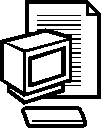
In 2000 the federal "Electronics Records and Signatures in Commerce Act" was enacted into law to facilitate the use of electronic records and signatures in interstate or foreign commerce.
In 1999 New York enacted the Electronic Signatures and Records Act (Chapter 57-A of the Consolidated Laws, also known as ESRA) and subsequently promulgated at title 9 NYCRR Part 540.
With the advancement of technology, an increasing number of Medicaid providers are seeking to use electronic records to support their Medicaid claims and to record the care, services and supplies that have been provided. We are providing these guidelines for the use of electronic records in the Medicaid program. These guidelines permit, but do not require, the use of electronic records, and are intended for Medicaid providers.
Electronic records are acceptable under the following circumstances:
- The electronic format conforms to the requirements of federal and State laws and regulations;
- The electronic record is the original record and has not been altered or, if altered, shows the original and altered versions, dates of creation, and creator;
- The electronic record is accessible to any auditing agency and is capable of reproduction in paper form at the provider's expense. The Department, or any other government agency, may require a certification that the paper reproduction is an exact copy of the electronic record;
- The content of the record meets the applicable requirements of the Medicaid program found in federal and State (18 NYCRR) regulations to support the claim for payment.
Confidentiality requirements mandated by HIPAA and other statutes are applicable to electronic records.
These guidelines do not supercede requirements which mandate the maintenance and retention of records in the form in which they were originally created.
- For example, providers are generally required to maintain original records to support Medicaid claims for a period of six years (18 NYCRR 517.3). Where original records are required, providers may store them off-site and maintain copies (paper or electronically imaged) on site. The original records must be accessible, made readily available upon a lawful request, and the location of the original records must be maintained in writing at the service location site. Any paper copying or electronic imaging of records must result in an exact reproduction of the original record and may be required to be authenticated.
Laboratory providers must also make sure that any electronic records used to order lab services comply with 18 NYCRR 505.7.
These guidelines should not be construed as either authorizing or otherwise applying to electronic signatures.
Should you have any questions regarding this, please direct them in writing to:
Mr. Gregor Macmillan
New York State Department of Health
Division of Legal Affairs, Bureau of Medicaid Law
Corning Tower Building, 24th Floor
Empire State Plaza
Albany, NY 12237
LEAD TOXICITY TESTING IS MANDATORY
Return to Table of Contents

Childhood lead poisoning continues to be an important health concern for young children in NY State, with nearly 10,000 children with harmful lead levels identified each year. Many children who are Medicaid enrollees are at risk for increased blood lead levels. According to the National Health and Nutrition Examination Survey (1991-1994), Medicaid enrollees accounted for 83 percent of U.S. children aged 1-5 years with blood lead levels (BLLs) greater than or equal to 20 ug/dL.
Under federal Medicaid standards and New York State Law, it is required that all children be tested for lead at 1 and 2 years of age using venous or capillary blood lead testing. If you find that a child was not tested previously, the federal Medicaid rules require that you test the child between 3 and 6 years of age.
Testing for other ages, including testing pregnant females, should be based upon your risk assessment. NY State's standards for blood lead testing are found at: www.health.state.ny.us. Find "Information for Providers/Childhood Lead Poisoning Prevention Program."
Risk Assessment - At each routine health supervision visit, you must assess the child for risk of high dose lead exposure, and test or refer for testing, those children found to be at high risk.
Risk Assessment Questions for Parents
Do you/your child live in or regularly visit a house or childcare facility built before 1960?
Do you/your child live in or regularly visit a house or childcare facility built before 1978 that is being, or has recently been renovated or remodeled?
Does the child have a sibling or playmate who has or did have lead poisoning?
Do you/your child frequently come in contact with an adult whose job or hobby involves exposure to lead?
Do you/your child live near a heavily traveled major highway where soil and dust may be contaminated with lead?
Do you/your child live near an active lead smelter, battery recycling plant, or other industry likely to release lead?
The children most at risk for lead toxicity are those who:
- Have iron-deficiency,
- Have been exposed to contaminated dust or soil,
- Have developmental delay,
- Have been victims of abuse or neglect,
- Are living alongside of heavily traveled urban streets,
- Have parents who are exposed to lead or who may be exposed to lead-containing folk remedies,
- Are immigrants or adoptees from countries where lead poisoning is prevalent.
Treatment for Lead Poisoning - Children found to have blood lead levels equal to or greater than 10ug/dL must be treated in accordance with the 1991 CDC guidelines: Preventing Lead Poisoning in Young Children and new CDC guidance on this topic. For children with a blood lead level equal to or greater than 20 ug/dL, further medical evaluation and environmental investigations are needed to identify the source of lead. You must refer these children (>20 ug/dL) for environmental and public health follow-up services by calling the county health department. Some local lead programs will initiate an investigation of an environment for a child with an elevated lead level less than 20 ug/dL.
Developmental Assessment and Referral - Your patients with elevated blood lead levels should receive a developmental assessment, and those under 3 years of age should be referred to the local Early Intervention Program. You should ensure that information is coordinated between the local Childhood Lead Poisoning Prevention Program, WIC, Head Start, and other private and public programs for your patients.
Booklets for providers, family education materials, and other resources for patients can be obtained by calling your local Childhood Lead Poisoning Prevention Program.
New
Recipient Other
Insurance
Codes
EXPANSION OF SERVICE AREAS
MANAGED CARE SPECIAL NEEDS PLANS
Return to Table of Contents
Medicaid recipients in New York City now have the option to enroll in the following expanded service area for five Special Needs Managed Care Plans.
| Medicaid Provider Name | MEVS code on VeriFone | 10 characters in eMedNY window | Service Area |
|---|---|---|---|
| FidelisCare Healthier Life SN | OF | FIDELIS SN | Bronx, Brooklyn, SI, Manhattan, Queens |
| Healthfirst PHSP Inc SN | OH | HLTHFST SN | Bronx, Brooklyn, Manhattan |
| NYPS Select Health SN | OG | NYPSSEL SN | Manhattan, Bronx (pending) |
| VidaCare Inc. SN | OD | VIDACARE SN | Manhattan, Bronx |
| MetroPlus Partnership in Care Plan SN | OM | METROPLUS SN | Brooklyn, Queens, Manhattan |
Providers should make note of these codes in their MMIS Provider Manual under the heading "Recipient Other Insurance Codes."
| Special Needs Plans: Provider Relations | ||
|---|---|---|
| NYPS SelectHealth SN Provider Relations (866) 469-7774 |
VidaCare Inc. SN Provider Inquiry (800) 556-0674 |
Fidelis Care HealthierLife SN Provider Relations Call Center (888) FIDELIS (888) 343-3547 |
| MetroPlus Plan SN Provider Relations Call Center (212) 908-8883 | Healthfirst PHSP SN Provider Relations (800) 801-1660 | |
Enrollees can call the New York Medicaid CHOICE Helpline at (800) 505-5678 to find out more about Special Needs Plans (SNPs).
Please contact the health plans above for SNP benefit package information.
Additional Special Needs Plans billing information and exceptions for mental health and chemical dependency providers may be found in the August 2003 Medicaid Update at
http://www.health.state.ny.us/health_care/medicaid/program/main.htm
Questions regarding this article can be directed to the Department of Health at (518) 486-1383.
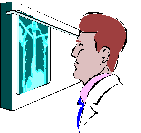
LIMITATION ON PAYMENT TO
PHYSICIANS FOR RADIOLOGY SERVICES
Return to Table of Contents
In order to be paid for both the professional and the technical and administrative components of a radiology service, physicians who provide radiology services in their offices must:
- perform the professional component;
- own or directly lease the equipment; and
- supervise and control the radiology technicians who perform the radiology procedures,
or
be employees of physicians who own or directly lease the equipment and must supervise and control the radiology technicians who perform the radiology procedures.
NOTE: No payment will be made to a qualified practitioner solely for the technical and administrative component of a radiology service.

This policy applies to all radiology services, including Computed Tomography (CT), Magnetic Resonance Imaging (MRI) and Positron Emission Tomography (PET).
Questions regarding this advisory should be addressed to the Bureau of Policy Development and Agency Relations at (518) 473-2160.
ARTICLE 28 CLINICS
BILLABLE CLINIC VISITS
Return to Table of Contents
For Medicaid patients, the basis of payment for most clinic services provided in hospital outpatient departments and diagnostic and treatment centers under Article 28 of the Public Health Law is the threshold visit. Health Department Regulation 10 NYCRR 86-4.9 states:
- A threshold visit occurs each time a patient crosses the threshold of a facility to receive medical care without regard to the number of services provided during that visit.
A threshold visit is counted each time a patient crosses the threshold at any facility's authorized sites to receive medical care. The visit is all-inclusive, i.e., it includes all of the services medically necessary and rendered on that date. Only one threshold visit per patient per day is allowed for reimbursement purposes, except for transfusion services to hemophiliacs, in which case each transfusion visit constitutes an allowable threshold visit. This policy does not apply to dialysis, abortion, sterilization services and freestanding ambulatory surgery, for which rates of payment have been established for each procedure.
When a Medicaid patient receives treatment(s) during a threshold clinic visit that cannot be completed due to administrative or scheduling problems, the Article 28 facility may NOT bill additional clinic visits for the completion of the service. For example, the completion of clinical laboratory test, blood draws or x-rays, that are scheduled subsequent to the initial clinic visit, do not qualify for reimbursement unless the patient is also seen for purposes of discussing the findings and for definitive treatment planning.
It is inappropriate for a clinic to call a client back for a service in order to generate an additional clinic visit for a service that should have been provided at the time of the first visit (and included in that payment). For example, if a patient needs both physical and occupational therapy on the same day, a clinic cannot provide one session on the first day and call the patient back for a second visit on a subsequent day to generate another clinic bill.
Questions about this article can be directed to the Bureau of Policy Development and Agency Relations at (518) 473-2160.
Pharmacy
Information
IMPORTANT LEVITRA OR VIAGRA
PRESCRIBING AND BILLING INFORMATION
Return to Table of Contents
Criteria for Prescribing/Dispensing Levitra or Viagra
Levitra will be added to the List of Medicaid Reimbursable Drugs effective 11/3/03.
The guidelines below describe appropriate billing for both Levitra and Viagra products:
- Levitra or Viagra Medicaid coverage is limited to males 19 years of age or older.
- Patients must have a diagnosis of erectile dysfunction made after a physical examination. (A telephone diagnosis is not permitted). Medicaid does not require the diagnosis to be written on the prescription but it must be noted in the patient's chart.
- Medicaid will not reimburse for Levitra or Viagra for patients who have obtained drugs containing nitrates within the past 180 days. The drug utilization review (DUR) system will reject these prescriptions due to the danger of a serious drug-to-drug interaction. Do not override this message, even if a prescriber is aware of a previous prescription for drugs containing nitrates. Do not fill these prescriptions.
- Prescriptions are limited to an original one-month prescription with up to two refills.
- Medicaid will reimburse for only one drug product every 31 days.
- The maximum quantity is six tablets every 30 days.
- Any quantity dispensed, up to and including six tablets, is considered a thirty-day supply.
- Do not refill Levitra or Viagra prescriptions before the 31st day. The DUR system will reject these claims as therapeutic duplications. It is imperative that pharmacists be alert to DUR responses. Filling a Levitra or Viagra claim prior to the 31st day is in violation of Medicaid pharmacy policy. Claims will be subject to recoupment.
- Medicaid will reimburse only one product strength for Levitra or Viagra per recipient per month. Do not fill a prescription and bill Medicaid for a different strength or product prior to the 31st day.
Drug Utilization Review Rejections
When dispensing Levitra or Viagra and a DUR rejection message is received, do not override this message. The DUR rejection messages are meant to protect patients and pharmacists from inappropriate and potentially dangerous drug-drug or drug-disease interactions, as well as alert pharmacists to potential policy violations. If a Levitra or Viagra DUR message is overridden and the claim captured, Medicaid may recoup payment for the inappropriately paid claim or the claim may be captured and subsequently denied. Pharmacists who routinely override DUR rejection messages may be subject to administrative action, which may include fines.
Questions regarding this article may be directed to the Medicaid Pharmacy Policy Unit at (518) 486-3209.
Practitioner
Health
Care Information
IS ELDERLY WEIGHT LOSS
A NORMAL PART OF AGING?
Return to Table of Contents
Malnutrition and anorexia contribute to one of the major problems in caring for the elderly. Clinically significant weight loss, defined as 5% over 1 month and 10% over 6 months, requires further investigation and should not be attributed to the aging process. 1
The Nutrition Screening Initiative (NSI) reports that one in four elderly patients suffer malnutrition, causing more infections and diseases. 2 Their injuries take longer to heal, surgery is riskier, and hospital stays are longer and more expensive.
As a health care provider, you can contribute to the well being of your elderly patients. The following are causes of malnutrition and ways to help your patients:

Causes of Malnutrition
- Acute infections
- Pressure ulcers
- Traumatic injuries, i.e., hip fractures
- Cancer
- Inadequate intake due to insufficient funds
- Isolation
- Depression
- Medications that interfere with absorption of nutrients

Recommendations for Improving Nutrition
- Proper eating habits
- Regular assessment of nutritional status
- Proper oral health
- Inspect and palpate oral tissues
- Re-educate patient on brushing and flossing
- Minimize tobacco and alcohol use
- Ensure proper fitting of dentures
Elderly weight loss is very serious. However, it can be managed with guidance. Good nutrition is essential for good health. New York State has programs to assist the elderly in maintaining a nutritious diet and provide for socialization and referrals for other services and programs.
Contact the New York State Office for the Aging at www.aging.ny.gov for more information.
________________________________________________________
1Clinical Consult, Supplement to the Journal of American Society of Consultant Pharmacists, Vol 16, 2001, pp 1-1.
2NSI initiative, www.aafp.org/x16081.xm Find "About NSI," then "Malnutrition in the Elderly."
Pharmacy Providers - Dual Billing
Return to Table of Contents
When a pharmacy provider receives a transaction response "Client Has Other Insurance", it is important to verify this information with the recipient. When the recipient does have other third party insurance in addition to Medicaid, the pharmacy needs to be sure that the "other coverage" code field (field 308-C8) in the Claim Segment, and the COB/Other Payments Segment are appropriately filled out.
The "Other Coverage" Code field values in NCPDP Version 5.1 are:
0 = Not Specified
1 = No Other Coverage Identified
2 = Other Coverage Exits - Payment Collected
3 = Other Coverage Exists - This Claim Not Covered
4 = Other Coverage Exists - Payment Not Collected
5 = Managed Care Plan Denial
6 = Other Coverage Denied - Not A Participating Provider
7 = Other Coverage Exists - Not In Effect At Time Of Service
8 = Claim Is A Billing For A Copay
For complete information on the COB/Other Payments Segment, including other payor amount paid, other payor amount paid qualifier, etc., please refer to the NYS Medicaid HIPAA (NCPDP 5.1) Companion Guide which can be found under the "News and Resources" tab at: www.hipaadesk.com/?nymedicaid
If the recipient has only Medicaid and no longer has other third party insurance, the recipient needs to contact their local Department of Social Services and have this information updated.
For billing questions, contact (800) 343-9000.

Ask the
Pharmacist...
What is the correct way to submit an electronic filing of claims with other insurance?
It is the responsibility of the provider to determine whether the service being billed for is covered by the recipient's other-insurance carrier. If the service is covered, or if the provider does not know if the service is covered, the provider must first submit a claim to the other-insurance carrier.
If a recipient has other insurance that doesn't cover medications, the pharmacist should use the number "3" after other insurance when filing electronically. This code means that the client has other insurance, but it doesn't cover that medication.
And remember, Medicaid is always the payer of last resort.
DECIMAL BILLING REQUIRED FOR 5.1 BILLING FORMAT
Return to Table of Contents
Pharmacists submitting claims using NCPDP 5.1 must bill Medicaid for the decimal quantity dispensed.
Claims submitted on line using NCPDP 5.1 can now be billed in quantities up to seven characters before the decimal and three characters after the decimal.
This change will not apply to providers until they switch to the NCPDP 5.1 format.
| NDC | NAME | BILL |
|---|---|---|
| 00075-0624-03 | Lovenox 30mg/0.3ml | 0.3 ml per syringe |
| 0085-0614-02 | Proventil HFA 90mcg Inhaler | 6.7 g per MDI |
| 00085-1133-01 | Intron -A 10MMU/ml/vial | 2.5 ml per vial |
| 00087-5650-41 | Stadol NS 10mg/ml Spray | 2.5 ml per squeeze bottle |
Do not round up at any point in the process.
Please Note: Until further notice, continue to bill Blood Products "per 10 units."
Rebilling will not be allowed for original claims that generated a DVS prior approval. This includes Viagra. Electronic adjustment/reversal of the claim results in the loss of the authorization.
If a change is needed to a paid DVS claim, you can submit the adjustment on paper or magnetic media. Changes to claims requiring DVS transactions must be made on paper.
Did You Know December 1st is World AIDS Day?
Return to Table of Contents

For More Information Contact:
American Association for World Health
1825 K Street, NW, Suite 1208
Washington, DC 20006
(202) 466-5883
www.aawhworldhealth.org

Guidelines for the Delivery of:
Prescription Drugs
Over-the-Counter Products
Medical/Surgical Supplies, and
Durable Medical Equipment
Prescriptions, over-the-counter medications, medical/surgical supplies or durable medical equipment (DME) must be prepared in accordance with instructions provided on the prescription or fiscal order.
- All shipping and/or delivery costs are the responsibility of the provider of service. Dispensing fees include routine delivery charges.
- The pharmacy or DME provider must first contact the recipient or caregiver to ensure that a delivery is needed. Confirmation of needed delivery shall be maintained in the patient's record. Automatic refills are not permitted.
- The recipient or caregiver must receive delivery. Electronic signatures for receipt of product are permitted only if retrievable and kept on file by the pharmacy or DME provider.
- If a pharmacy or DME provider uses a delivery service, the pharmacy or DME provider is responsible for delivery of the product to the intended recipient or caregiver. Replacement of lost, stolen or misdirected medication, supplies and DME is the sole financial responsibility of the pharmacy or DME provider. The Medicaid program does not provide reimbursement for replacement supplies of lost, stolen or misdirected medication or DME deliveries.
- The pharmacy or DME provider must guarantee appropriate delivery of intact, usable product (i.e., if product requires refrigeration, the provider must ensure delivery under appropriate product storage conditions).
Questions regarding this article may be directed to the Medicaid Pharmacy Policy Unit at (518) 486-3209.
PATIENT EDUCATIONAL TOOLS
Return to Table of Contents

This month's patient educational tools feature articles as follows on:
- Diabetes and Depression,
- a seven-page document on the clinical guidelines for the diagnosis, evaluation and management of adults and children with asthma, 2003.
The Medicaid program encourages practitioners to copy and distribute this information to their patients and to share them with their colleagues.
________________________________________________________
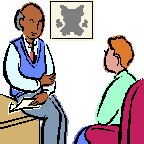
Depression and Diabetes
Return to Table of Contents
Depression can strike anyone, but people with diabetes may be at greater risk. Several studies have suggested that having diabetes doubles the risk of depression compared to those without diabetes. The chances of becoming depressed increase as diabetes complications worsen. Research shows that depression leads to poorer physical and mental functioning, so a person is less likely to follow a required diet or medication plan. Treatments for depression help people manage symptoms of both diseases, thus improving the quality of their lives.
Symptoms of Depression
- Persistent sad, anxious, or "empty" mood
- Difficulty concentrating, remembering, making decisions
- Feelings of guilt, worthlessness, helplessness
- Loss of interest or pleasure in hobbies and activities that were once enjoyed
- Feelings of hopelessness, pessimism
- Decreased energy, fatigue, being "slowed down"
- Appetite and/or weight changes
- Insomnia, early-morning awakening, or over-sleeping
- Restlessness, irritability
- Thoughts of death, suicide or suicide attempts
If five or more of these symptoms are present every day for at least two weeks and interfere with routine daily activities such as work, self-care, and childcare or social life, seek an evaluation for depression.
Diabetes requires that a person be actively involved in monitoring blood sugars, diet, exercise, and his or her own health in general. Depression, which can persist and become clinically significant, can have a major impact on the adjustment to diabetes, and its management. A health care professional can help clarify the diagnosis and provide a referral to get appropriate care. This care can enhance a person's sense of well-being and can help those with diabetes and depression to assume normal lives and regain firm control of their diabetes management.
Source: National Institutes of Health U.S. Department of Health and Human Services, NIH publication No. 02-5003, May 2002
The Medicaid program reimburses for medically necessary care, services and supplies for the diagnosis and treatment of diabetes. Treatment for depression is covered when provided by a primary health care provider. For more serious cases of depression, the patient may receive the services of an enrolled psychiatrist or clinical psychologist. For information regarding Medicaid coverage of services related to diabetes, contact the Bureau of Program Guidance at (518) 474-9219.
NEW YORK DEVELOPS A STATEWIDE ASTHMA GUIDELINE TOOL
Return to Table of Contents

Clinical Guideline for the Diagnosis, Evaluation, and Management of Adults and Children with Asthma - 2003
An expert panel of physicians representing multiple medical specialties, professional societies and health insurers has developed the first Statewide asthma guideline tool for use by all insurers and providers in New York State.
Their work has been reviewed and endorsed by: the New York State Department of Health, New York City Department of Health and Mental Hygiene, New York State Health Plan Association, New York State Coalition of Prepaid Health Services Plans, New York State Blue Cross/Blue Shield Plans, Medical Society of the State of New York, New York State Academy of Family Physicians, New York Chapter American College of Physicians, and the American Academy of Pediatrics, District II.
The development of the Clinical Guideline for the Diagnosis, Evaluation and Management of Adults and Children with Asthma - 2003, based on the Expert Panel Report from the National Institutes of Health, is a first step in a broader strategy for improving asthma care in New York.
http://www.health.state.ny.us/diseases/asthma/pdf/2005_asthma_guidelines.pdf
The guidelines were distributed by the New York State Department of Health to all primary care physicians and selected specialty physicians in September 2003.
A number of actions are planned to support clinicians and health care organizations in the implementation phase of this effort. Patient and provider education on current treatment recommendations, tools and activities to effect organizational and systems changes, and mechanisms for monitoring improvements over time are a few examples.
Regional conferences for physician Continuing Medical Education (CME) will be held across New York State to review the key components of the guidelines and to identify how primary care physicians have successfully moved "From Paper to Practice" and improved asthma care at the primary care practice level. We hope to encourage physician leaders to develop collaborative partnerships to improve asthma care in their region.
For more information on a regional conference in your area, please visit the Island Peer Review Organization at www.ipro.org or call (516) 326-7767, extension 330. Participants will receive two CME credits, and there is a CME fee of $25.00. All conferences are scheduled from 5:30 pm through 9:00 pm and include dinner. The program begins at 6:00 pm. The locations and dates of the upcoming conferences include:
Westchester
Hilton Tarrytown
455 South Broadway
Wednesday, November 12, 2003
Long Island
Melville Marriott
1350 Old Walt Whitman Road
Thursday, January 15, 2004
Manhattan
New York Academy of Medicine
1216 Fifth Avenue
Tuesday, January 27, 2004
Brooklyn
Brooklyn Marriott
333 Adams Street
Thursday, January 8, 2004
Syracuse
Wyndham Syracuse Hotel
6301 Route 298
Thursday, January 22, 2004
Bronx
Maestro Caterers
1703 Bronxdale Avenue
Tuesday, February 3, 2004
HealthNow Family Health Plus Dental Providers
Return to Table of Contents
HealthNow (BlueCross BlueShield of Western New York and BlueShield of Northeastern New York) will no longer provide dental coverage as part of its Family Health Plus (FHPlus) program effective January 1, 2004.
Dental providers are to follow the guidelines in the notice sent by HealthNow regarding certain procedures that should be completed and billed beyond January 1, 2004.
HealthNow members in the following counties have the option of transferring to another plan that does offer dental and should contact their local department of social services:
- Albany
- Cattaraugus
- Chautauqua
- Clinton
- Erie
- Essex
- Niagara
- Rensselaer
- Saratoga
- Schenectady
- Warren
- Washington
HealthNow will continue to provide dental benefits for members enrolled in the Child HealthPlus program.
For questions, contact HealthNow Network Management at (518) 220-5601.

COVERAGE OF PALIVIZUMAB (SYNAGIS)
For Children at Risk for Respiratory Syncytial Virus Infections
Return to Table of Contents
Palivizumab is an intramuscular injection used in certain high-risk children, especially those with histories of prematurity and chronic lung disease (formerly designated as bronchopulmonary dysplasia) as prophylaxis for respiratory syncytial virus (RSV). RSV is a leading cause of bronchiolitis and pneumonia in infants. The RSV season typically starts in November and lasts through April. Palivizumab injections should be initiated at the start of the RSV season, and then administered monthly through the remainder of the RSV season.
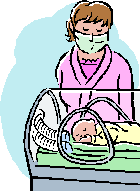
Guidelines
Following are guidelines for identifying children who should be considered for RSV prophylaxis adapted from the American Academy of Pediatrics' Policy Statement1:
- Infants and children less than 24 months of age with chronic lung disease (CLD) who have required medical therapy for CLD within the past 6 months before the anticipated start of the RSV season.
- Neonates born at greater than 28 weeks and less than 32 weeks gestation with or without CLD who are less than 6 months of age at the start of the RSV season.
- Neonates born at 28 weeks of gestation or less with or without CLD and who are less than 12 months of age at the start of the RSV season.
- Neonates born between 32 and 35 weeks gestation with or without CLD who are less than 6 months of age at the start of the RSV season only if two or more additional risk factors are present including: school age siblings, child-care attendance, exposure to environmental air pollutants, congenital abnormalities of the airways or severe neuromuscular disease.
- Children who are 24 months of age or younger with hemodynamically significant cyanotic and acyanotic congenital heart disease.
Palivizumab should not be used for the treatment of RSV disease.
Reimbursement and Payment
The Medicaid program provides reimbursement for palivizumab when billed by Medicaid-enrolled physicians, nurse practitioners and pharmacy providers.
Practitioner Billing
Physicians and nurse practitioners should use code 90379, Respiratory syncytial virus immune globulin human, for IV use, per 50 mg, when billing the cost and administration of palivizumab. Insert the acquisition cost plus a two-dollar ($2.00) administration fee in the "amount charged" field on the claim form. For more information on practitioner billing, see the MMIS Physician Provider Manual page 7-105 (7/1/03).
Pharmacy Billing
Pharmacy providers should enter the palivizumab NDC number into the on-line billing system as they would for any prescription pharmaceutical.
For further information on Medicaid coverage guidelines of palivizumab, please contact staff in the Bureau of Program Guidance.
Physician providers: (518) 474-9219, Pharmacy providers: (518) 486-3209
For billing questions, please contact CSC at (800) 343-9000.
References:
- American Academy of Pediatrics, Committee on Infectious Diseases and Committee on Fetus and Newborn. Policy statement: revised indications for the use of palivizumab and respiratory syncytial virus immune globulin intravenous for the prevention of respiratory syncytial virus infections.http://www.aap.org/policy/rsvpolicy.pdf
- American Academy of Pediatrics, Committee on Infectious Diseases and Committee on Fetus and Newborn. Prevention of respiratory syncytial virus infections: indication for the use of palivizumab and update on the use of RSV-IGIV. Pediatrics. 1998;102:1211-1216.
- Meissner HC, et al. Prevention of RSV infection in high risk infants: Consensus opinion on the role of immunoprophylaxis with palivizumab, a humanized respiratory syncytial virus monoclonal antibody for prevention of respiratory syncytial virus infection in high risk infants. Pediatr Infect Dis J. 1999;18 (3):223-231.
- Synagis® (palivizumab) prescribing information. Medimmune, Inc., Rev. Date Sept. 14, 2003.
Return to Table of Contents
Fraud impacts all taxpayers.
Do you suspect that a recipient or a provider has engaged in fraudulent activities?
Please call:
1-877-87FRAUD
Your call will remain confidential.
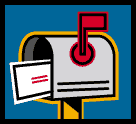
Providers! Are You Changing Your
Correspondence Address or Pay to Address?
Return to Table of Contents
If you change your address, it is your responsibility to notify the Medicaid Program in writing. Keeping your file current will ensure you receive all updates and announcements.
Your request should include your
- provider name;
- provider identification number;
- category of service;
- new address;
- new telephone number; and,
- provider's signature.
Signature stamps, photocopies, etc. are not acceptable.
Indicate if this new address is to include changes to both the correspondence address and pay to address and mail to:
Office of Medicaid Management
New York State Department of Health
150 Broadway, Suite 6E
Albany, New York 12204-2736
The Medicaid Update: Your Window Into The Medicaid Program
The State Department of Health welcomes your comments or suggestions regarding the Medicaid Update.
Please send suggestions to the editor, Timothy Perry-Coon:
NYS Department of HealthOffice of Medicaid Management
Bureau of Program Guidance
99 Washington Ave., Suite 720
Albany, NY 12210
(e-mail MedicaidUpdate@health.state.ny.us )
The Medicaid Update, along with past issues of the Medicaid Update, can be accessed online at the New York State Department of Health web site: http://www.health.state.ny.us/health_care/medicaid/program/main.htm